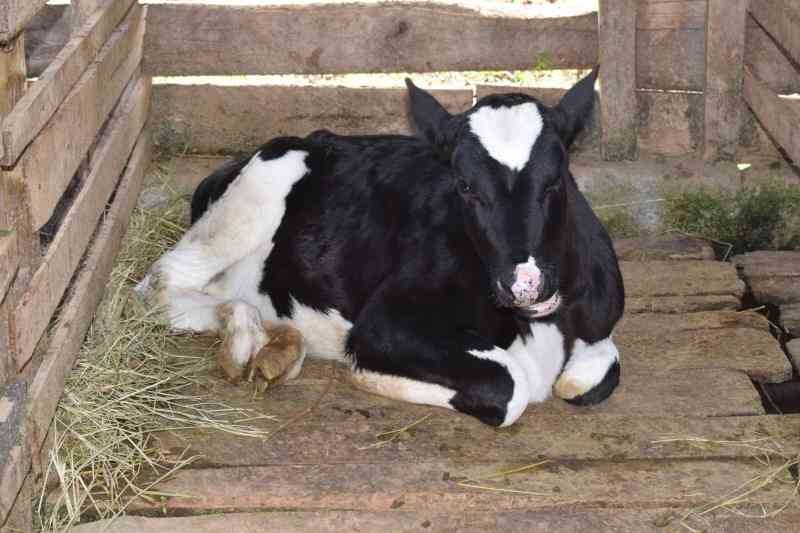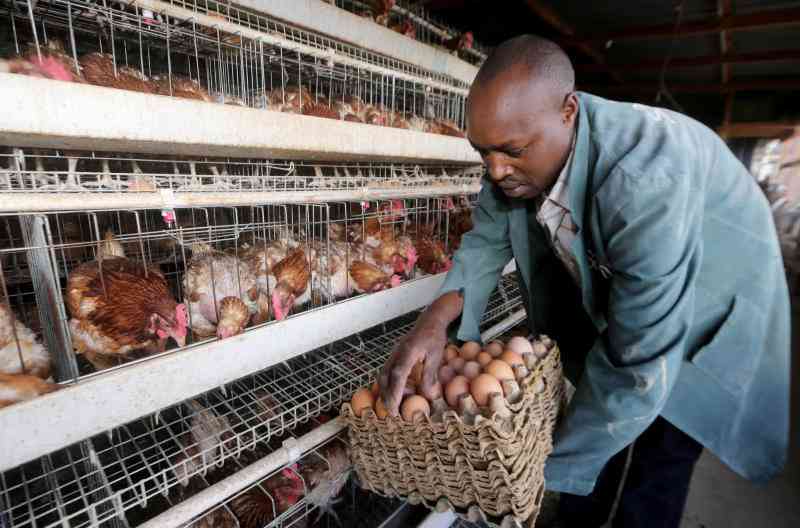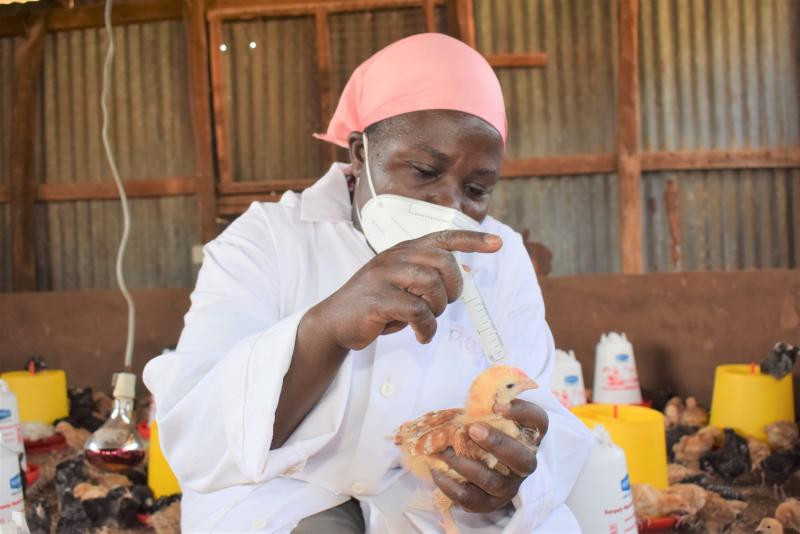
Batrice Jepkemoi feeding her one-week-old chicks at her chicken brooder at Kipkorgot in Uasin Gishu County. [Christopher Kipsang, Standard]
I have always emphasised to poultry farmers that the best period to manage their flocks is within the first seven days before placement (preparation period) and within the first seven days after placement (brooding period).
It is also good to note that the quality of day-old chicks reflects the condition, health and well-being of the parent birds and the hatching process.
Pre-placement house preparation as part of the management programme provides a basis for efficient and profitable flock performance.
It starts with a well-thought-out cleaning and disinfection process after the removal of the old litter or manure.
The single most important factor in keeping poultry healthy is maintaining good hygiene. Farm sanitation does not just mean the choice of a good disinfectant.
The key to farm sanitation is effective cleaning. You must use plenty of water and detergent and it follow up with terminal disinfection with a potent disinfectant applied according to the manufacturer’s recommendations.
Monitoring the effectiveness of cleaning and disinfection procedures will ensure that chicks are placed in a clean environment and remain healthy and productive through to depletion or end of production.
Healthy parents and hygienic hatchery conditions contribute greatly to disease-free chicks. Good hygiene standards throughout the hatching process will reduce disease challenges in the future.
It is good practice, therefore, to purchase chicks from a reputable firm, hatchery, breeder, chick agent and or integrator.
Choose your supplier carefully and take time to know the vaccination history of the mother flocks.
Day-old chicks must be handled with care, and there are several basic things to bear in mind.
A flock that gets off to a good start is easier to control, has a higher body weight at the start of the rearing process, is more uniform, has a better health status and reaches “genetic potential” more easily.
Before the chicks arrive, check that everything in the house is working properly, make sure that the jikos (charcoal stoves) are on, there is enough fresh air coming in, feed and water are readily available, and there is enough light.
Depending on the outside temperature, heat the house 24 hours before the chicks arrive or build it up to the right temperature for the chicks over four days. The drinking water must be lukewarm (>200c but < 280c). Temperature is measured using a thermometer.
Check the relative humidity (minimum 55 per cent) using a hygrometer (which can easily be purchased from an agrovet shop).
In dry weather, you can spray the walls using a garden sprayer, which will work wonders. Keep an eye on the carbon dioxide levels.
If you ventilate too little, in cold weather, for example, the carbon dioxide level can increase and may kill your birds or cause “water belly” disease.
The chicks’ behaviour is a key indicator that everything is as it should be. After the chicks arrive, spread out the boxes of chicks around the house, and then place the chicks by the feed and water points.
Check them every couple of hours. If your chicks are spreading out all over the space, the temperature and ventilation are likely fine.
If they are huddling together in some places, are less active, are reluctant to move around and look as if they are “lost”, the temperature is likely too low, and it is time to heat up the house.
If your chicks are avoiding certain places, some sections may be draughty, and it is time to raise the curtain.
If the chicks are lying on the ground with wings spread out, seem to be gasping for air and start to chirp, then it is too hot or there is too much carbon dioxide in the air. Open the curtains to ventilate more.
If young chicks all press up against the wall, it is too light or too cold and will chirp loudly. Get theM to spread out more in the house by walking from front to back and tapping on the wall. The chicks will be attracted by the sound and will disperse better.
[Dr. Messo is the company veterinarian at Kenchic. For more information, contact him at [email protected]]
 The Standard Group Plc is a multi-media organization with investments in media platforms spanning newspaper print
operations, television, radio broadcasting, digital and online services. The Standard Group is recognized as a
leading multi-media house in Kenya with a key influence in matters of national and international interest.
The Standard Group Plc is a multi-media organization with investments in media platforms spanning newspaper print
operations, television, radio broadcasting, digital and online services. The Standard Group is recognized as a
leading multi-media house in Kenya with a key influence in matters of national and international interest.











